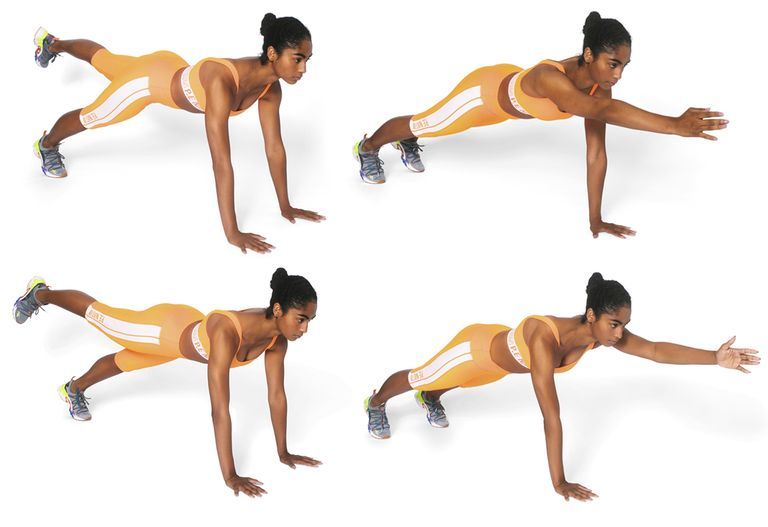You don’t go about your day moving in one direction, and the same should apply to your time at the gym. But if your workouts are looking a little one-sided, there’s no need to overhaul your entire routine; simply take your fave move “around the world.”
This means changing the angle of your body as you perform a set of exercises—like planks, lunges, or squats—in order to tap smaller muscles in the transitional (read: weight-shifting) phase.
 Ben Ritter
Ben Ritter
You’ll also improve your range of motion and better prime your body for everyday demands (lifting a suitcase, catching yourself mid-slip) since you’re branching out of that typical front-to-back plane, says personal trainer Lauren Kanski, CPT.
For example, start in a high plank, then move into a side plank (by picking up one arm and leg at a time) to rotate your body left, then right. Or move through a lunge series: Step one leg forward (forward lunge), then out to the side (lateral lunge), then behind you (backward lunge); repeat on the other leg.
Also try it with jump squats: Explode into the air facing forward and land in a squat, then pivot your body to the right as you jump again, landing to the right. (Imagine a clock: Start at 12, then rotate to 3, 6, 9, and end back again at 12.) Focus on engaging your core and breathing. “That’s where you get most of your power and coordination,” says Kanski. And go slow: The point is to use your strength, not momentum.
This article originally appeared in the December 2019 issue of Women’s Health.
Source: Read Full Article






